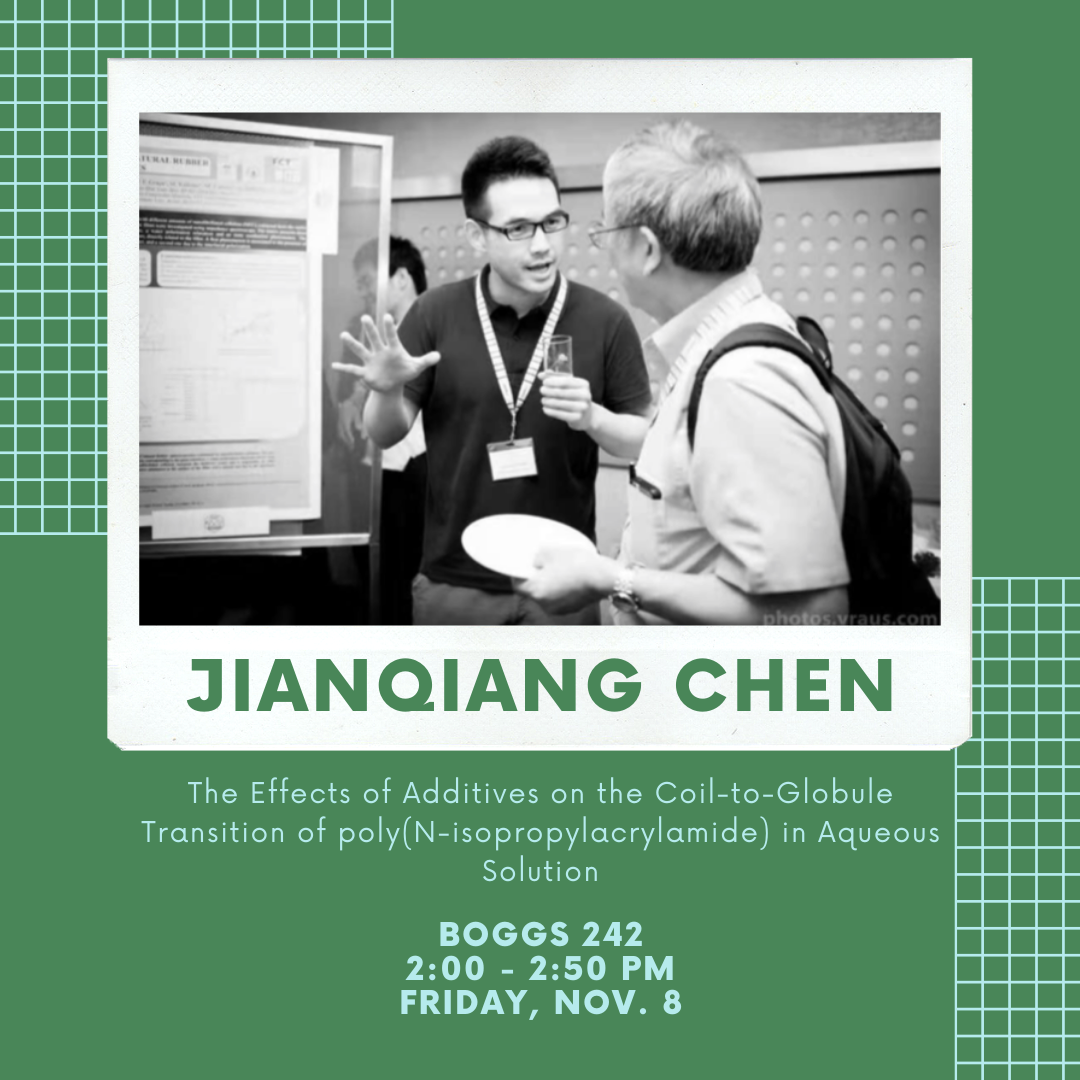CBE Seminar: The effects of additives on the coil-to-globule transition of poly(N-isopropylacrylamide) in aqueous solution

Poly(N-isopropylacrylamide) (PNIPAM) is a well-known thermo-sensitive polymer that exhibits a low critical solution temperature (LCST) at around 305 K in aqueous solutions. The coil-to-globule transition of PNIPAM can be induced by a small temperature variation (1~2 K) accompanied by abrupt conformational changes. The LCST behavior of PNIPAM has been attracting research interests for several decades because of its implication in a number of living phenomena, especially on protein folding and DNA packing. However, the coil-to-globule transition of PNIPAM has been greatly affected by some additives, such as surfactants and inorganic salts. Therefore, the researches on the effects of the additives on the coil-to-globule transition of PNIPAM have gained great realistic significance. In this work, with the applications of laser light scattering (LLS), viscometry as well as high-resolution nuclear magnetic resonance (NMR), the effects of the anion surfactant sodium n-dodecyl sulfate (SDS) on the coil-to-globule transition of PNIPAM under various temperatures and surfactant concentrations have been systematically studied. Besides, the effects of eight inorganic salts on the coil-to-globule transition of this polymer have been also explored. Several interesting results have been drawn.
